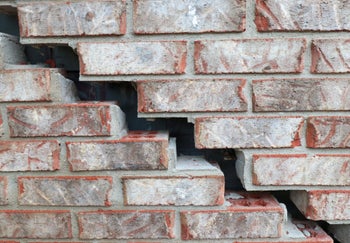Foundation Cracks: Pictures, Causes, And Repair Methods
Table of Contents
1. Types Of Foundation Cracks
2. How Do I Know When Foundation Cracks Are Serious?
3. Causes Of Foundation Cracks
4. Foundation Crack Repair Methods
5. Cost To Repair Foundation Cracks
6. How To Prevent Foundation Cracks
Some foundation cracks (pictures below) are just ugly, while others indicate you may have a structural problem on your hands. Typically, when you catch foundation problems early, you spend less money on repairs. That’s why every homeowner should know the signs of foundation trouble, including what to look for when it comes to foundation cracks.
The thing to remember is that not all foundation cracks should cause you to worry. Some are just unsightly. In the foundation repair industry, we call these “non-structural cracks.” Many of them are shrinkage cracks caused by concrete shrinkage during the curing process, and while you should monitor them, they shouldn’t cause you to lose sleep. However, some cracks are a sure sign of structural problems. If you see structural cracks, you’ll need to call a professional. We’re going to talk more about this below.
Types Of Foundation Cracks
Vertical Cracks
Vertical foundation cracks are very common and usually aren’t a sign of structural damage. They’re mainly caused when concrete shrinks during the curing process. However, that doesn’t mean they’re harmless. In some cases, water can seep into your basement or crawl space through a vertical crack.
Important note: Although it’s true that vertical foundation cracks aren’t usually anything to worry about, vertical cracks that go through brick and mortar do indicate a serious structural problem. If you see any of these cracks, contact a foundation repair contractor right away for an inspection.
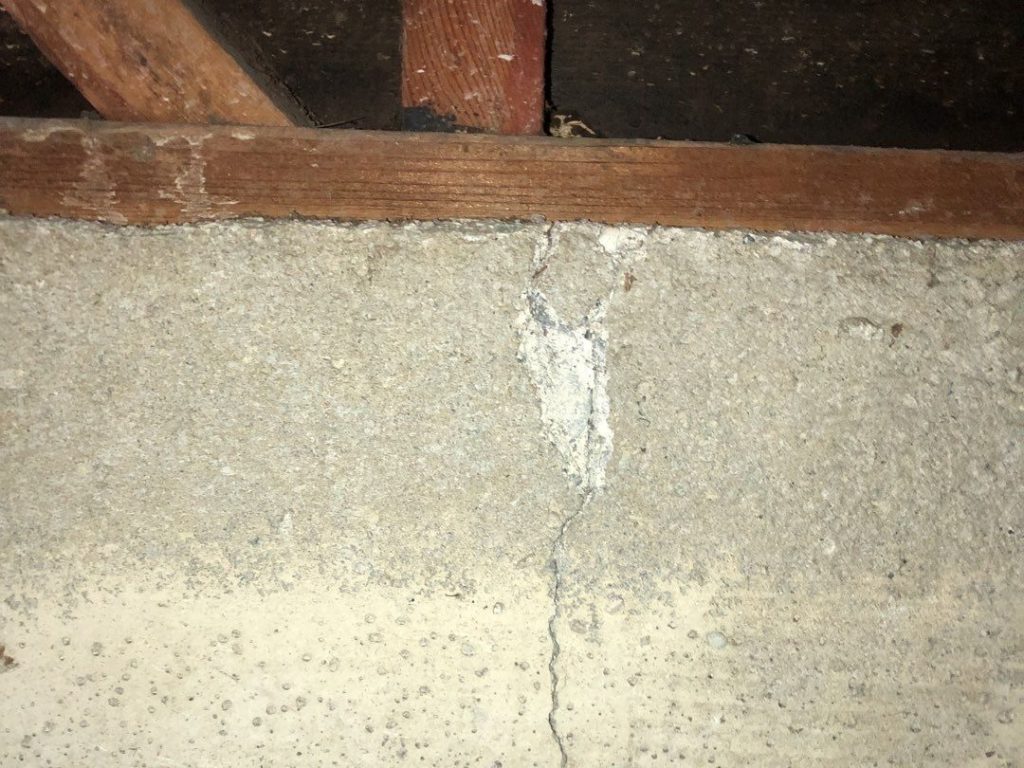
Stair Step Cracks
Stair step cracks occur in brick or concrete block walls and are a sure sign of differential settlement, which can cause serious foundation damage. If you see stair-step cracks, don’t delay. Contact a foundation repair professional and ask for an inspection.
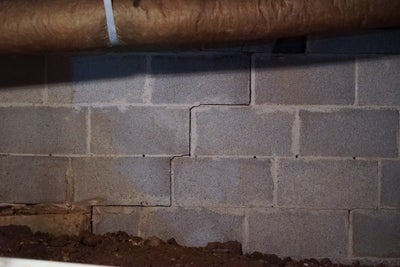
Diagonal Cracks
Diagonal cracks along your foundation wall – some may even be hairline cracks – are often wider at one end. These cracks are caused by differential settlement. If you see any, contact a pro.
Important note: Sometimes you’ll see diagonal cracks that run from the corners of windows and doors up toward the ceiling. If these are hairline cracks, they probably aren’t anything to worry about. However, if they’re wider than 1/10 inch, call a foundation repair contractor for an inspection.
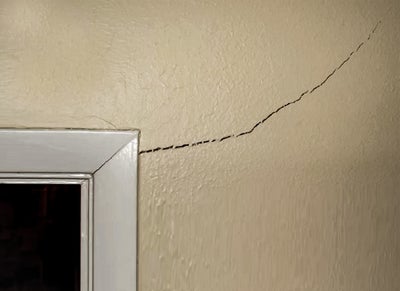
Hairline Cracks
Hairline cracks in both concrete and mortar are usually caused by shrinkage during the curing process, and as such, you shouldn’t lose any sleep over them as long as they’re less than 1/10 inch wide and shallow. Just monitor them to make sure they’re not getting bigger.
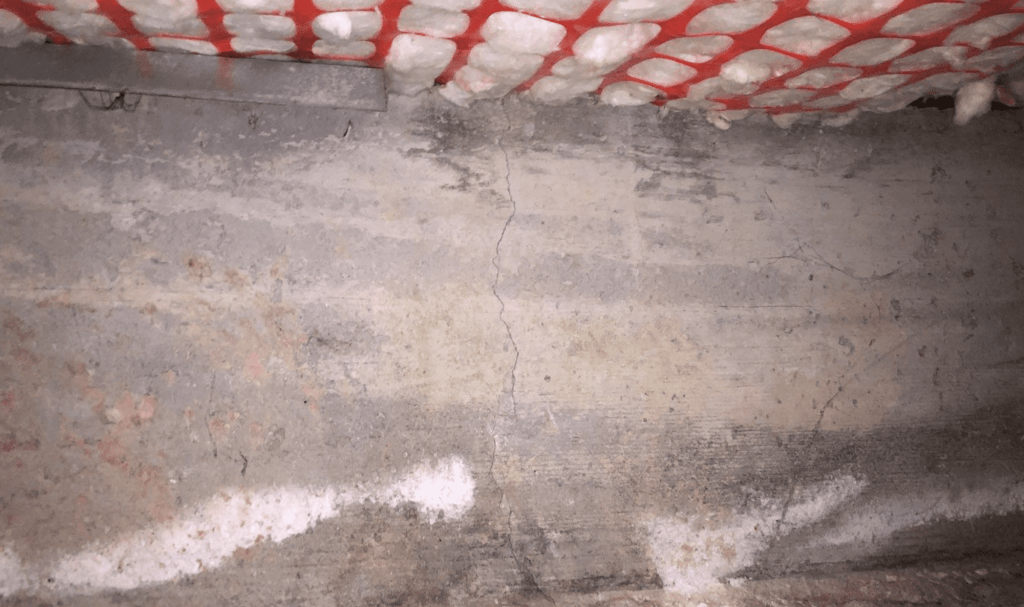
Cracks Around Doors And Windows
Look out for diagonal cracks that extend from the corners of doors and windows up toward the ceiling. If these are hairline cracks, it’s probably nothing to worry about. However, wider cracks should be looked at by a foundation repair contractor.
Drywall Cracks
Not all drywall cracks are caused by foundation problems. However, if you fix a drywall crack and it keeps coming back, you might have structural damage. In this case, contact a foundation repair contractor for an inspection.
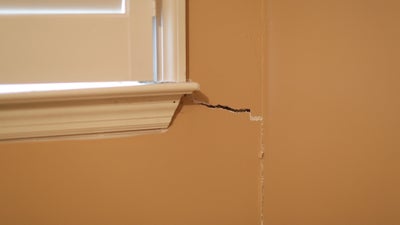
How Do I Know When Foundation Cracks Are Serious?
Generally, foundation cracks are serious when they’re either horizontal, wide, deep, and/or numerous. These cracks indicate the foundation has moved quite a bit. You’ll also want to watch out for interior cracks that mirror an exterior crack. Vertical cracks usually aren’t serious, although they may provide a way for water to get into your basement.
If you see any of the signs listed below, we recommend getting an evaluation by a licensed professional such as Bay Area Underpinning right away. Foundation problems get worse over time and if you wait, they’ll be more expensive to fix:
- Windows and/or doors that are hard to open and close
- Floors that are no longer level
- Ceilings and/or floors that have separated from the wall by even a small amount
- Floor cracks, especially those that go from wall to wall. (A crack limited to one tile was probably caused by something heavy falling on it.)
- Wall cracks with or without bowing
- Bowed walls
- Torn wallpaper. This may indicate the wall behind the wallpaper is cracked or bowed.
- Rotated walls
- Diagonal cracks that run from the corners of doors and windows up toward the ceiling
- Moldings that have separated from the wall and/or ceiling
- Stair step cracks in brickwork
- Chimneys or porches that have separated from the rest of the house.

Causes Of Foundation Cracks
Foundation cracks are almost always caused by differential settlement. The causes of differential settlement include,
- Soil that isn’t adequately compacted before construction. In this case, the heavy structure built on top of the soil will cause it to compact, almost always unevenly. This uneven settlement puts stress on the foundation and can lead to foundation damage, including cracks.
- Poor drainage around the foundation. Believe it or not, water is one of the main culprits behind foundation problems. Too much water in the soil around your home’s foundation creates hydrostatic pressure, which pushes against the foundation. Foundation walls can bow and even crack under this pressure.
- Expansive soil. Expansive soil expands as it absorbs water and then shrinks by that same amount when it dries out. This movement in the ground puts a lot of stress on a foundation and will, over time, cause structural damage.
- Weather changes. An example of this would be a house built on expansive soil during the dry season. When the wet season comes around, the soil expands and pushes against the foundation.
- Seismic activity. We probably don’t need to explain how earthquakes can cause foundation problems.
- Heavy excavation next to the foundation. Picture a chair sitting on a sandy beach. What will eventually happen if you start digging a big hole too close to it? The chair will fall into the hole. The same thing can happen when there’s heavy excavation too close to your home’s foundation. While your home probably won’t fall into the pit, the digging can cause foundation damage.
- Flooding. Even slowly moving floodwater is powerful enough to move a foundation, causing damage.
Foundation Crack Repair Methods
Foundation crack repair methods include,
Epoxy crack repair
Epoxy is very strong – much stronger than polyurethane foam – and because of this, it’s used to repair horizontal cracks, which are almost always structural. Epoxy doesn’t expand like polyurethane foam but instead fuses the cracks and creates a firm bond.
Wall anchors
Wall anchors are a fast, minimally-invasive way to strengthen and straighten failing foundation walls. When wall anchors are installed using excavation, the straightening process happens almost immediately.
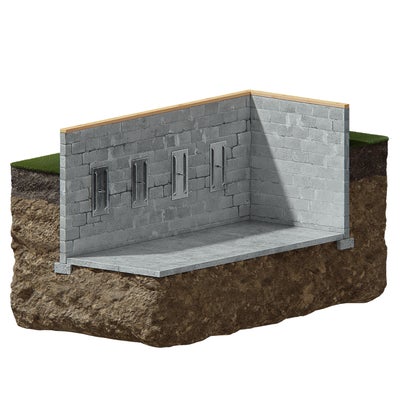
Carbon Fiber Wall Straps
Carbon fiber is a strong, non-stretchable, non-breakable fabric used to build commercial aircraft. This makes it great for strengthening and stabilizing both concrete block and poured concrete walls. The installation is quick and doesn’t require any digging.
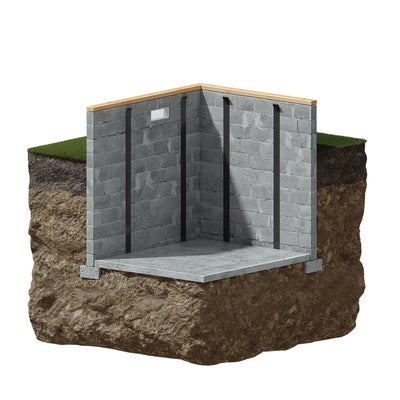
Sometimes the above methods aren’t enough because the foundation is experiencing differential settlement that can only be fixed using piers – usually resistance push piers – which anchor the foundation to competent soils will support it. Push piers are a permanent solution that will prevent the foundation from settlement.
Other commonly used piering methods for fixing foundation cracks include helical piers, drilled concrete piers, and slab piers.
Cost To Repair Foundation Cracks
The cost to repair foundation cracks depends on the type and severity of the crack, the chosen repair solution, and your geographical location. Therefore, we can’t give you even a ballpark figure. The only way to find out is to contact a foundation repair contractor and ask for an inspection and repair estimate. Most contractors will do inspections for free.
How To Prevent Foundation Cracks
Believe it or not, most foundation problems are caused by water, usually too much of it. When the soil under and around your home’s foundation gets saturated with water that can’t drain off hydrostatic pressure will build up and start pushing against the foundation. This leads to cracks and other problems. So, you can prevent foundation cracks by controlling the groundwater around your home:
- Regrade your yard – Your yard should slope away from your home so that water will flow away from the foundation. Either a landscaper or a foundation repair professional can help you with yard regrading. It might also make a great DIY project.
- Clean your gutters regularly – Clogged gutters can cause water to pour down the side of your house and into the soil surrounding your foundation. You don’t want that.
- Add downspout extensions, if necessary – Sometimes downspouts are too short and dump water too close to the foundation. Extensions are an easy way to channel the water away from your home.
- Install an underground downspout sump pump – These are often referred to as “bubbler pots.” The water coming down from the gutters flows into a downspout that runs underground to a bubbler pot at some distance from the foundation. When the pot is full, it pops up and expels the water away from the home.
- Foundation underpinning – Foundation cracks can also be caused by drought when the soil under and around the foundation dries out and shrinks. You can prevent this from happening by underpinning the foundation so it rests on bedrock instead of soil that expands and contracts according to the weather.
- Exterior and/or interior drain tile – Drain tile provides a way for excess water in the soil around your foundation to drain off, either via gravity or via a sump pump. Exterior drain tile is installed around the outside perimeter of the foundation at the footing level, while interior drain tile goes under the basement floor.
Foundation cracks are pretty common, and most of the time, they’re just ugly and not a sign of structural damage. While it’s good to monitor those cracks, please don’t lose any sleep over them. However, sometimes foundation cracks are a clear sign of structural damage. Those cracks need to be repaired immediately because they’ll get worse over time and will be more expensive to fix.
If you have one or more foundation cracks and are in our service area in Northern California, contact us today for a free inspection and estimate.
More Resources
Publish Date:
Last Modified Date:
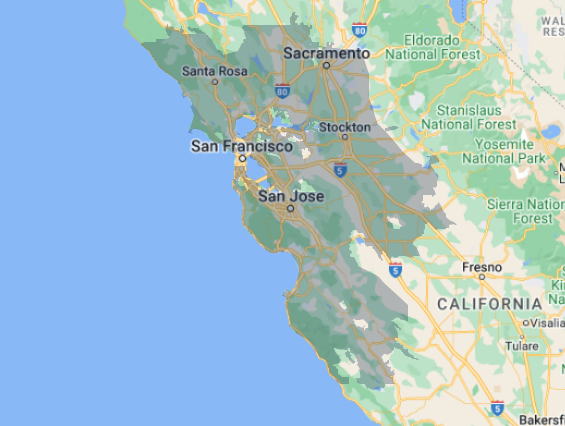
Our Locations
2333 Courage Dr. Suite C
Fairfield, CA 94533
1161 N Fair Oaks Ave
Sunnyvale, CA 94089



